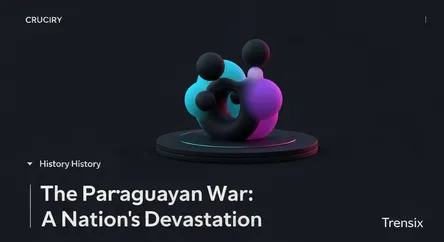History
The Paraguayan War: A Nation's Devastation

A brief overview of the Paraguayan War (1864-1870), the deadliest conflict in South American history, and its catastrophic consequences for Paraguay.
What is it?
The Paraguayan War, also known as the War of the Triple Alliance, was the deadliest and bloodiest interstate war in Latin American history. Fought from 1864 to 1870, it pitted Paraguay against a powerful alliance of Brazil, Argentina, and Uruguay. The conflict arose from a complex web of regional tensions, including border disputes, struggles for power over the Río de la Plata region, and meddling in Uruguay's internal politics. Paraguayan President Francisco Solano López declared war first on Brazil and then Argentina after they interfered in an Uruguayan civil war, siding against his allies. Despite initial offensives, the much smaller and landlocked Paraguayan nation was ultimately overwhelmed by the Triple Alliance's superior numbers and resources.
Why is it trending?
The Paraguayan War remains a topic of significant historical discussion due to its sheer brutality and the catastrophic scale of its consequences. It is considered a case of "total war," where the civilian population suffered immensely alongside the military. The war's legacy continues to shape the geopolitical landscape of the region and serves as a crucial point of study for understanding nationalism, political ambition, and the devastating impact of armed conflict. Historians continue to debate the motivations of President López and the degree to which external powers influenced the war, ensuring its continued relevance in academic and popular historical discourse.
How does it affect people?
The war's impact on Paraguay was catastrophic and its effects linger to this day. The conflict annihilated a vast portion of the country's population; estimates suggest losses of up to 60%, including a staggering 90% of its adult male population, due to combat, disease, and starvation. This demographic collapse reshaped Paraguayan society for generations, creating what was known as a "country of women." Paraguay was also forced to cede significant territory to Brazil and Argentina. The nation's development was set back by decades, contributing to ongoing economic and social challenges compared to its neighbors.